site search
online catalog
WW1 ITALIAN HELMET, EX-JARRETT MUSEUM
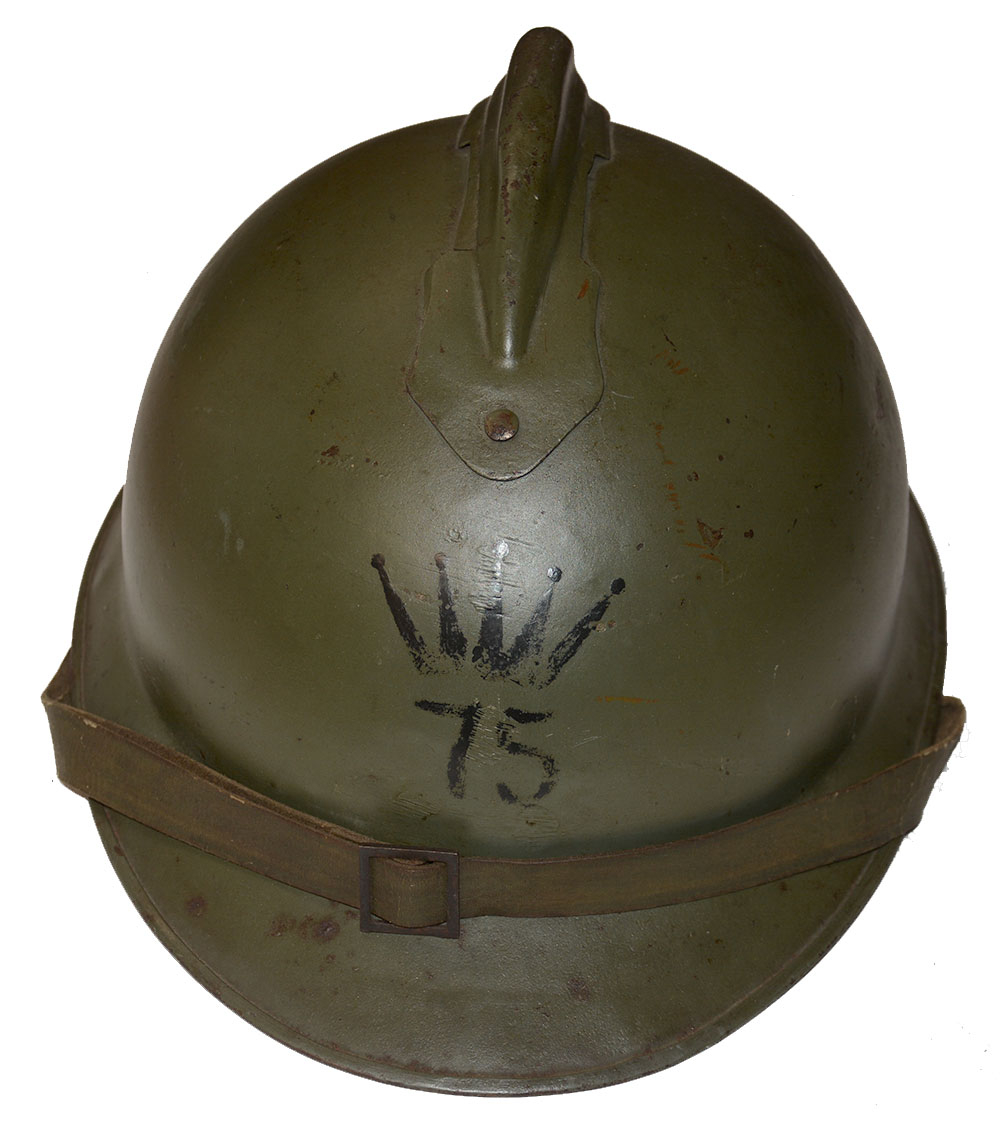
Hover to zoom

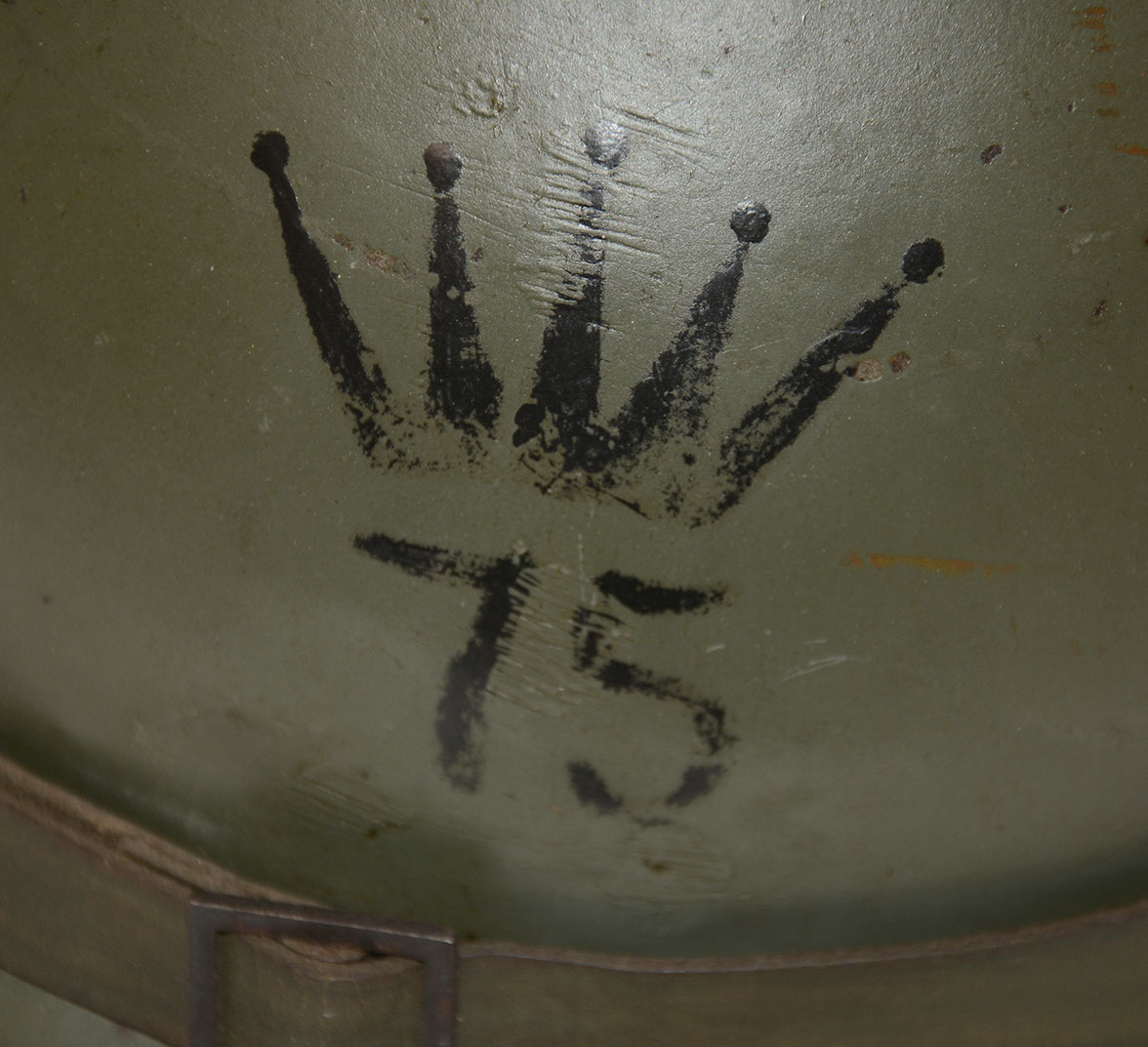

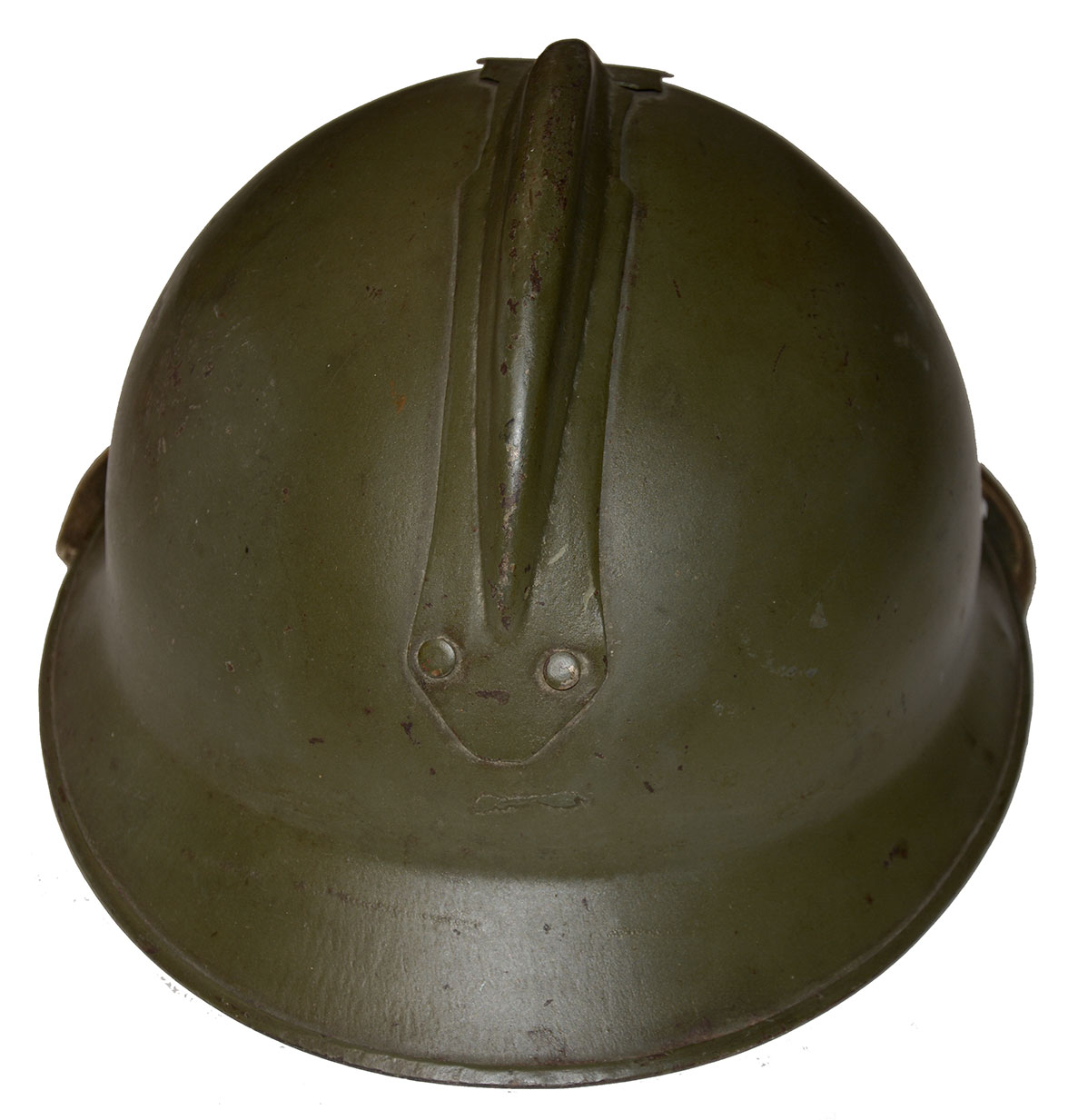
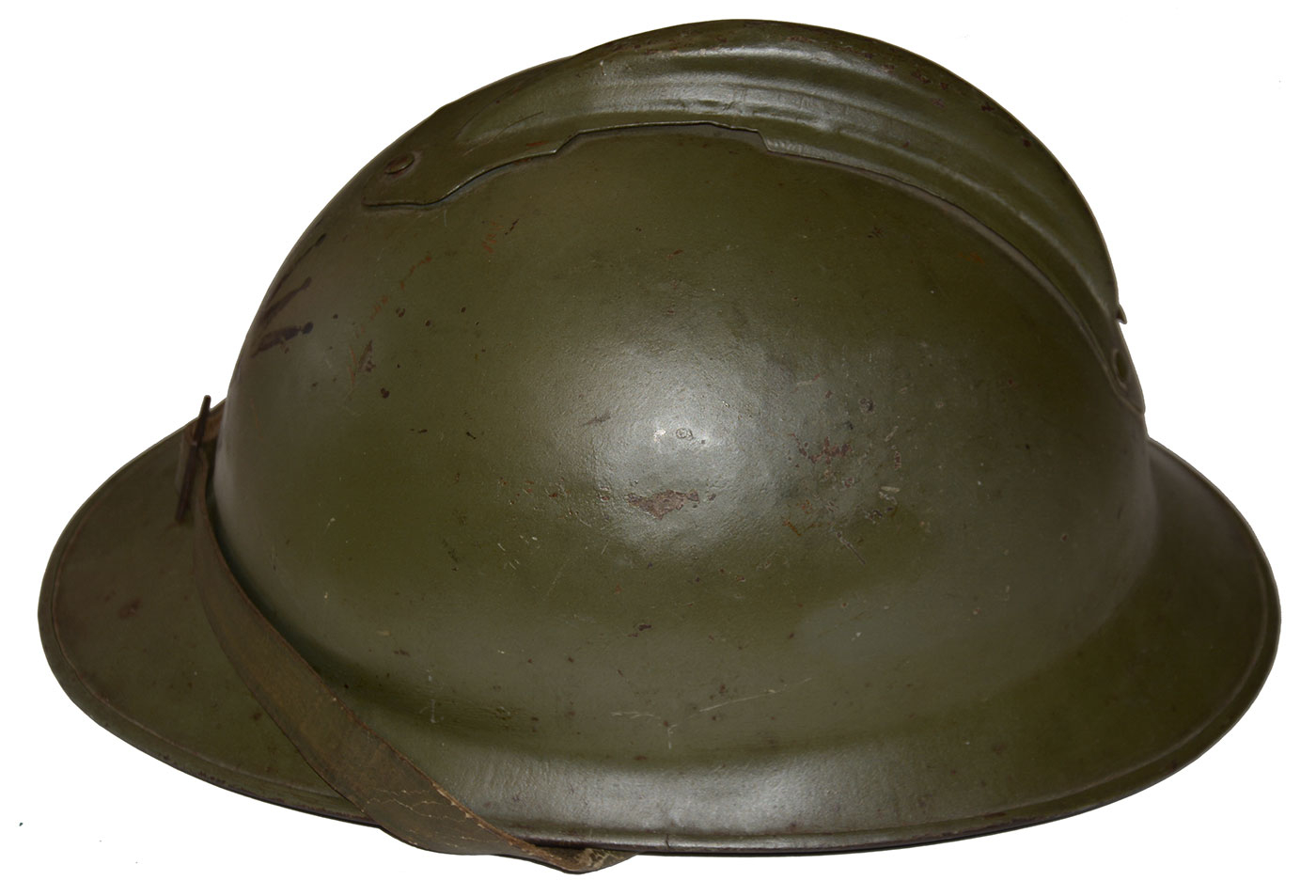
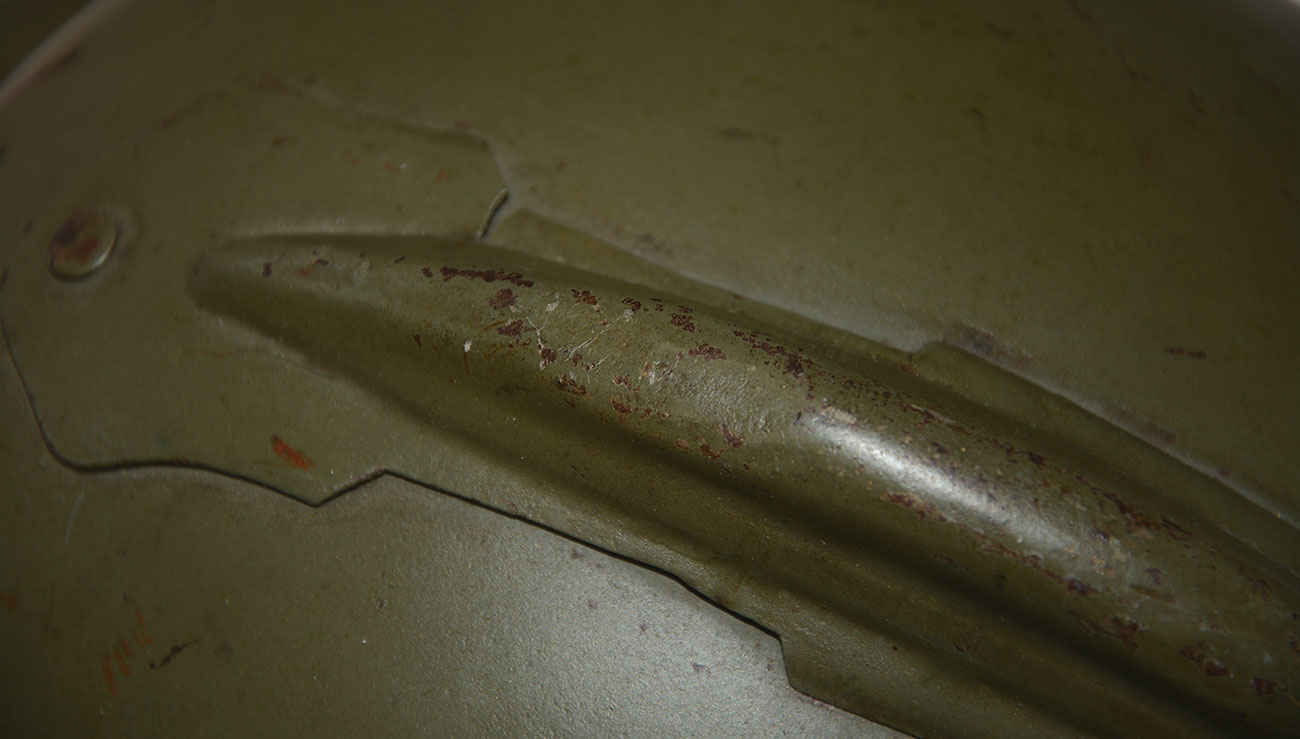
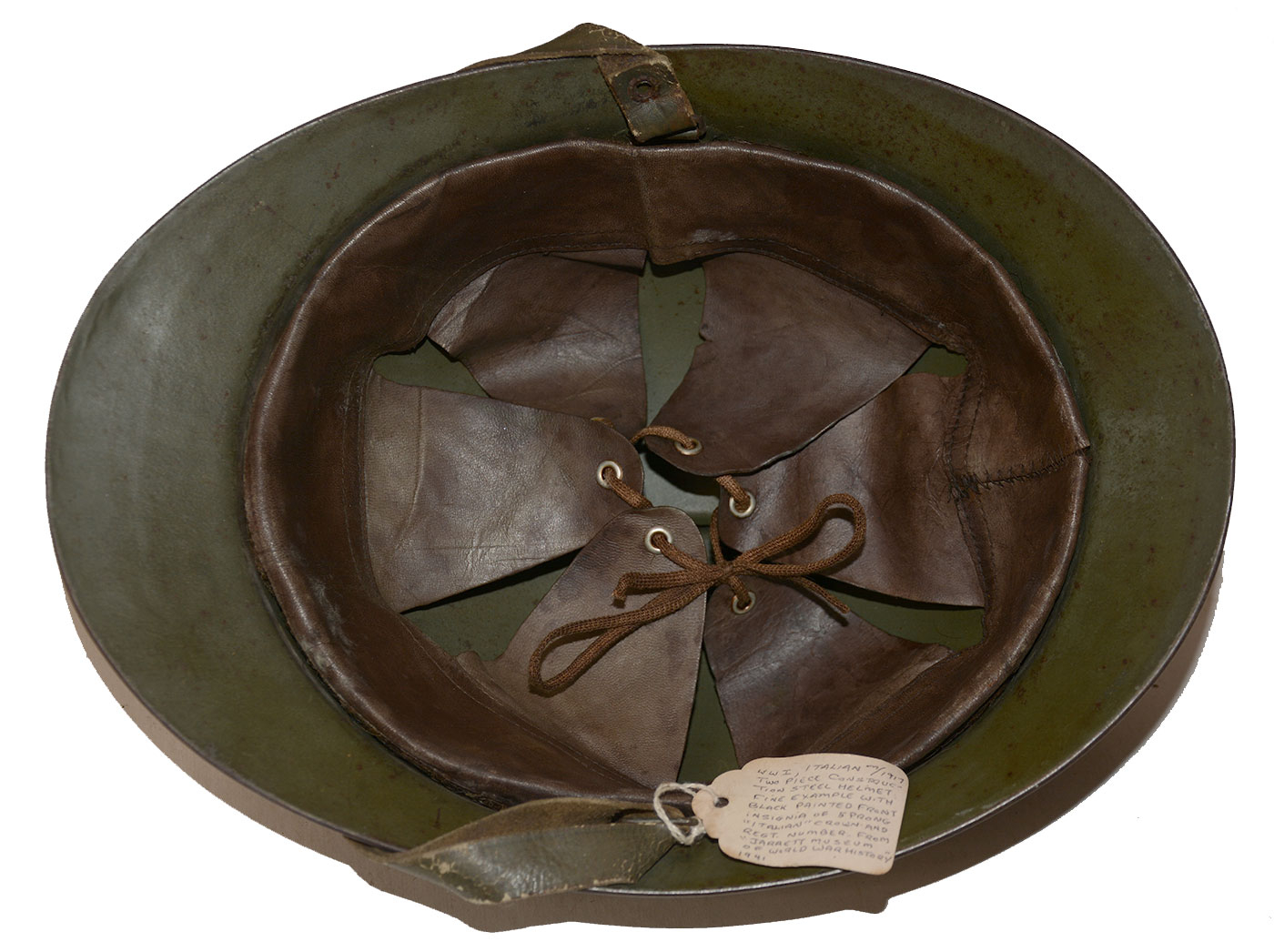
$850.00 ON HOLD
Quantity Available: 1
Item Code: 1202-696
A fine example of the Italian M1917 World War One helmet with original strong green paint and black painted Italian five-prong crown with the regimental number below. The comb is in place, as is the liner and chinstrap. The paint shows just a few small, thin spots of wear on the wearer’s upper left and brim. Please see our photos. A tag with it indicates that not only did it come from the Jarrett Museum of World War History, but had been a gift to that museum from the Italian government.
The 75th Regiment, consisting of three battalions, was part of the Brigade Napoli in the 24th division. In June 1915 the brigade fought against Austro-Hungarian forces in the First Battle of the Isonzo on Monte Sabotino and in October fought in the Third Battle of the Isonzo on the slopes of Monte Sei Busi and in Cave di Selz. In May and June 1916 the brigade operated in the Monfalcone sector and again in the area of Cave di Selz; in July 1916 it was at San Grado di Merna and in August fought in the Sixth Battle of the Isonzo. In November 1916 the brigade fought in the Ninth Battle of the Isonzo. The 75th Infantry Regiment was awarded a Silver Medal of Military Valor in August 1916 for its conduct at Monfalcone in June, and in December 1916 the 76th Infantry Regiment was awarded a Bronze Medal of Military Valor for its conduct at Monfalcone in June and at San Grado di Merna in November. In September 1917 the brigade fought in the Eleventh Battle of the Isonzo and suffered heavy losses in October-November at Caporetto, after which the brigade was rebuilt and assigned to the 2nd Corps in France in Spring 1918, fighting in the Argonne sector in May and in June in the Bois de Vrigny area, fighting in the Second Battle of the Marne. In fall of 1918 the brigade participated in the Hundred Days Offensive and fought at Chemin des Dames. For their conduct in France the two regiments of the Brigade "Napoli" were both awarded a Silver Medal of Military Valor
Col. George Burling Jarrett (1901-1974) was a collector’s collector of militaria and ordnance, visiting WW1 European battlefields as early as 1922, picking up material himself and developing local contacts for relics, eventually amassing a collection of over 6,300 items, including tanks, artillery, and aircraft, much of which he exhibited at his museum on the Steel Pier in Atlantic City from 1930-1939 and at an in-law’s farm in Moorestown, NJ.
Becoming an officer in the army reserve in 1927, he was called to active service in 1939, putting his knowledge and passion to work at the Aberdeen Proving Ground, and in 1942 worked in North Africa, orienting British troops to US ordnance and equipment, examining German ordnance, and developing solutions for problems allied ordnance faced in use against German armor, etc. He returned to Aberdeen after the war, becoming Museum Officer and Chief, Foreign Materiel Branch, and then curator of the ordnance museum and head of their technical library as a civilian. Even after retiring in 1966, he worked in preserving the collections of the army’s Ordnance Museum.
A “1941” date on the tag with the helmet likely indicates the date of the helmet’s purchase from Jarrett. Having joined the allies in WW1 in 1915, a gift from the government to the museum in the interwar period makes sense. By 1941, however, sentiments had changed, perhaps making sense of its deaccession or sale.
This is a great looking helmet. [sr] [ph:L]
~~~~~~~~~~~~~~~~~~~~~~~~~~~~~~~~~~~
THIS ITEM, AS WITH ALL OTHER ITEMS AVAILABLE ON OUR WEB SITE,
MAY BE PURCHASED THROUGH OUR LAYAWAY PROGRAM.
CLICK HERE FOR OUR POLICIES AND TERMS.
THANK YOU!
Inquire About WW1 ITALIAN HELMET, EX-JARRETT MUSEUM
Most Popular
Historical Firearms Stolen From The National Civil War Museum In Harrisburg, Pa »
Theft From Gravesite Of Gen. John Reynolds »
Selection Of Unframed Prints By Don Troiani »
Fine Condition Brass Infantry Bugle Insignia »
Large English Bowie Knife With Sheath 1870’S – 1880’S »
Imported (Clauberg) Us Model 1860 Light Cavalry Officer's Saber »
featured item
MINT IDENTIFIED BREVET BRIGADIER GENERAL’S FROCK COAT AND CHAPEAU OF ALONZO ALDEN
This sets consists of Brevet Brigadier General Alonzo Alden’s mint condition brigadier general’s frock coat with shoulder straps and his full dress “light French chapeau,” allowed for officers of the General Staff and Staff Corps” under the… (1179-156). Learn More »


